The subtropical island of Madeira in the North Atlantic Ocean about 280 miles off the coast of Morocco attracts many tourists. Madeira is located at the same latitude as Bermuda, which lies further west in the Atlantic. Madeira covers an area of 286 sq. miles and is 35 miles from west to east and 14 miles from north to south at its widest point. The total coastline is 90 miles. Madeira is part of Macaronesia, a group of four archipelagoes including Madeira, the Azores, and the Canary and Cape Verde Islands. Since 1976 it has been, along with The Azores located to the northwest, an autonomous region of Portugal. It is one of the outermost regions of the European Union. The archipelago of Madeira was discovered in 1418 by the Portuguese explorers João Gonçalves Zarco and Tristão Vaz Teixeira. It includes the islands of Porto Santo, Madeira, and two uninhabited islands, Selvagens and Desertas. To visit Madeira – the name means “wood” in Portuguese – is a journey into a lost paradise. This Eden has many names as if one was not enough to summarize all that the island has to offer: “the island of flowers”, “the pearl of the Atlantic”, “the floating garden” and “the Petite Reunion”. In Madeira, everything evokes an easily accessible paradise on earth. On this piece of land, flowers grow like weeds, and the island is rich in majestic natural scenery. So, let’s explore the enchanted corners of this floating garden !
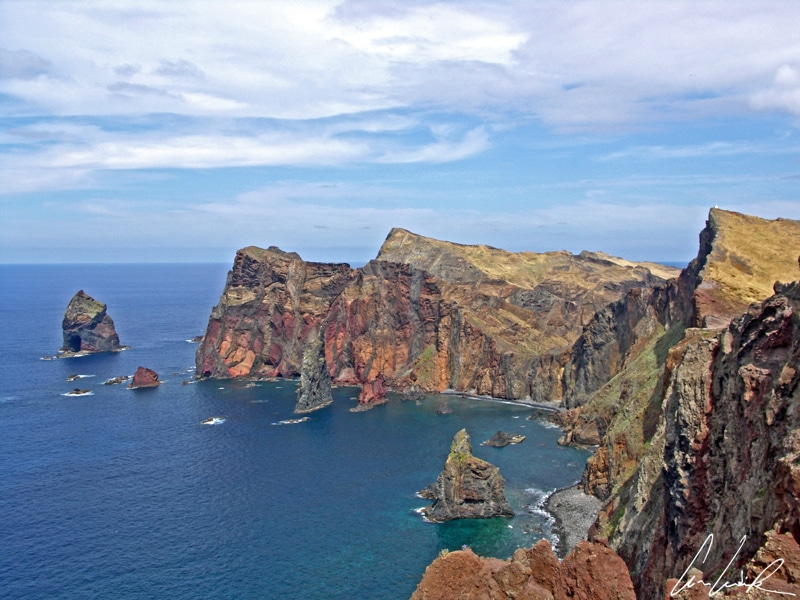
The peninsula of São Lourenço, a dry rocky landscape
As the plane begins its descent, the first impression of Madeira is striking. We fly over the peninsula of São Lourenço, a dry rocky landscape that could not be more unlike the cliché of a green flowered island… Then as we pass over the South coast, the multi-colored patchwork of the scene begins to emerge. The eye picks out a concentration of small white houses mingling harmoniously with the green hills and the crystalline blue water of the Atlantic Ocean–a true kaleidoscope of colors. Set in a beautiful bay surrounded by green mountains, Funchal is the capital of the archipelago. The name comes from the Portuguese word “Funcho”, which means fennel. When the Portuguese navigators Tristão Vaz Teixeira, Bartolomeu Perestrelo and João Gonçalves Zarco officially discovered the island in 1419, wild fennel grew in abundance along the riverbanks at the site of the present city. The site of Funchal is imposing. The city leans against a mountain amphitheater which plunges into the ocean. The buildings climb up this amphitheater to a height of nearly 2,000 feet above sea level… The houses seem pinned to the dramatic hillside among abundant vegetation, flower gardens, and cultivated terraces. In the center of town it is pleasant to stroll in the fresh air past the marina all the while observing sailboats, a replica of Christopher Columbus’s caravel the Santa Maria, and in the distance, cruise ships entering or leaving the harbor. The occasional transatlantic cruise ships disgorge their Europe – or Caribbean -bound tourists onto Funchal. As in every port worldwide, a queue of taxis is waiting. Tourists will visit the botanical garden to discover the incredible floral wealth of the island and then spend a few euros on souvenirs. At the end of the day, they will re-board their floating hotel for a night at sea on the way to the next port…

The South coast with a concentration of small white houses mingling harmoniously with the green hills and the crystalline blue water
Apart from this “speedy” tourism, we took the time to immerse ourselves in the local culture and to explore Funchal on foot. The old town (“zona velha”) includes the colonial heart of the city built around the cathedral of Our Lady of the Assumption, commonly called “Sé”, a Portuguese word meaning “seat”. The “Sé”, the seat of the Roman Catholic Diocese of Funchal and the first Portuguese overseas Cathedral was completed in 1514 and survives virtually intact. Its white plaster facade contrasts with the black basalt and red tuff from Cabo Girão (Cape of Return in Portuguese) located about 11 miles west of the capital. This reddish promontory dominates the Atlantic Ocean in a sheer vertiginous cliff. This spectacular cliff rises between 1,840 and 1,935 feet from the sea. It is one of the highest cliffs in Europe. At the bottom of the cliff the waves have cut a series of terraces, Fajas de Cabo Girão, which are now cultivated, offering an astonishing contrast of colors. These cultivated terraces are protected by the cliffs and are ideal for vines and cereals. Until recently they were only accessible by boat. In August 2013 a cable car was installed on the slope of the cliff. After this short diversion, let’s go back to our visit of the “zona velha”. Walking away from the Cathedral through Tavira street, we reach the town hall square (Praça do Município) paved with white and black stones. The square is lined on three sides by the Jesuit College and church. The town hall and the former bishopric became the museum of sacred art in 1955. The church of the College (Igreja do Colégio) is recognizable by its white facade ornamented with black basalt framed windows and a Gothic portal of the same material. The IHS monogram, the emblem of the Jesuits, is represented on the façade, I (iota), H (eta) and S (sigma). The monogram is the first three letters of the name Jesus in Greek ΙΗΣΟΥΣ. Beyond its historic buildings, the old town has become an open-air art gallery where local artists display their works on doors and shutters. It is difficult to stop in Funchal without visiting (preferably early in the morning before the opening of boutiques and restaurants) the Street Art of Santa Maria Street. Even if you are fond neither of historic buildings nor Street Art, it is still enjoyable to stroll through the picturesque little streets of Funchal looking for some “azulejos” hiding here and there, more or less out of sight. The city is a palette of colors with stunning bougainvillea and beautiful decorations such as garlands of paper, carpets of flowers, and “Charolas” (decorative balls of fruits and vegetables). The local population is preparing actively for the “Festa da Flor” (the Feast of Flowers, a tribute to spring,) an extravagant visual and olfactory spectacle ! The celebration is held every year after Easter when the flowers are in full bloom. Dozens of floats decorated with the most beautiful flowers pass through the streets leaving behind their ephemeral perfume.
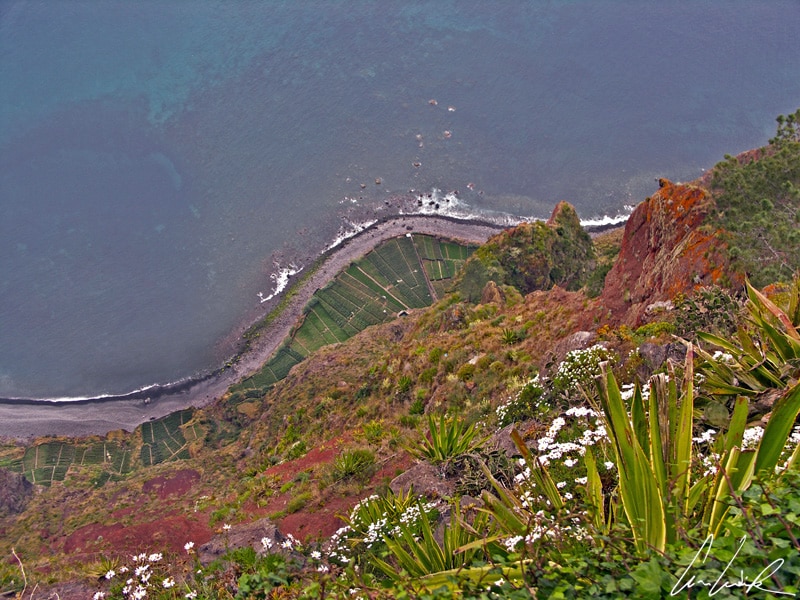
At the bottom of the cliff the waves have cut a series of terraces, Fajas de Cabo Girão, which are now cultivated
The Mercado dos Lavradores (market of the Laborers) in the heart of the Santa Luzia district is the lungs of the city where local products are nicely displayed. In a building from the 1940’s the central patio is paved with black and white stones in a checkerboard pattern. Here merchants wearing the traditional red costume topped with a funny hat sell their flowers. The well-appointed stalls of exotic flowers are a magnificent multi-colored rainbow of exquisite beauty and fragrances. On the ground floor, around the patio, fruits, vegetables and local products takes places of honor. What amazing fruits and vegetables ! Maracuja, ceriman whose fragrant flesh recalls a mix of banana and pineapple. The abundance of tropical fruits with exotic flavors offers a large assortment of desserts. Mango, banana, avocado, and passion fruit are used in puddings, flans, soufflé, mousses and ice cream. During a short pause, we enjoy a “Sumo de Maracujá” (passion fruit juice)… if you please ? You can taste the famous “Poncha” of Madeira if you prefer sugar cane alcohol, honey, and lemon. It is an excellent choice as well ! Our thirst quenched, we continue our discovery of the building by adventuring into a separate hall located in the lower part… Here we find the fish market and its star the Espada or black scabbardfish. The black scabbardfish is found deep in the sea at a depth of 5,600 feet. It has an elongated coppery black body evoking a knife blade with smooth skin. The snout is large with strong, sharp fang-like teeth about half an inch long – just to cut your hands. This species could have been featured in a remake of “Jaws”. It is an emblematic dish in Madeira restaurants always served as a fillet. If this kind of black eel does not tempt you whether fried, grilled, or accompanied with sliced bananas or passion fruit, then try the “bife de atum” or the “bife de espadarte”, which is grilled and served with a drizzle of olive oil or the “Lapas Grelhadas” (grilled limpets).
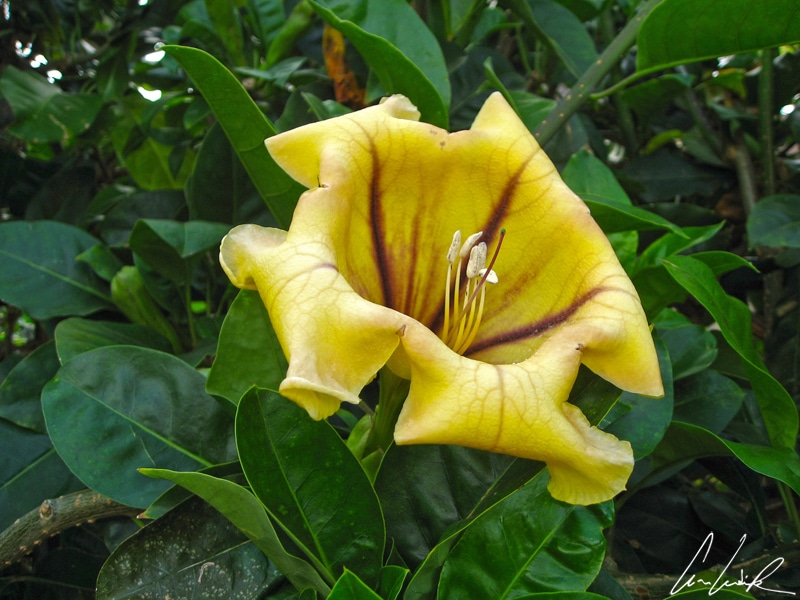
The Madeira Botanical Garden, Solandra’s flower
The Madeira Botanical Garden (Jardim Botânico da Madeira Engenheiro Rui Vieira) located at Quinta do Bom Sucesso on the heights of Funchal at about 985 feet above sea level offers a breathtaking view of the ocean and the bay of Funchal. The 35,000 m2 garden was previously part of an estate owned by the family of William Reid. It opened to the public in 1960 and contains over 2,000 exotic plants from all over the world, along with an aviary bird and a small Natural History Museum. Madiera’s subtropical Mediterranean climate is perfect for the outdoor cultivation of most of the indoor plants that we pamper to ensure their survival. Outdoors, in Madeira, they can sometimes reach impressive heights such as Cereus peruvianus (Peruvian Cereus or Peruvian Apple or cactus candle from Peru) that rises up to 33 feet into the blue sky. The lonely white flowers of these columnar cacti appear on one of the sides of the stem and open at night. But these pretty ribbed stems are also full of thorns… Beware of the little spine in your hand: “Whoever rubs up against it, will get stung !” But the dangerousness of a plant is not only expressed by its appearance… Another saying to keep in mind while walking in the Madeira Botanical Garden is “clothes do not make the man”. Consider the magnificent Cup of Gold vine, also called the Liana Trumpet (Solandra Maxima) and endemic to Mexico and Central America, with its large yellow flowers and its deep glossy green leaves is very popular in tropical gardens. Solandra’s flowers open in the evening and remain open for 24 hours. The 6-8 inches trumpet-shaped flowers have a strong, sweet and captivating scent reminiscent of monoi with a banana or vanilla aroma. Yet do not succumb to its hypnotic charm because Solandra belongs to the family of Solanaceae like Belladonna, Black nightshade, and Datura… The plant is “narcotic-acrid”, that is it contains a poison both narcotic and inflammatory. This teasingly exotic liana almost deceived me… Some peafowls deploy their blue or white plumage with panache in the aisles of the Botanical Garden. Indian peacocks display their elaborate fanned feathers. The tail of the blue peacock is dark brown, and the train is made up of 100 to 150 elongated feathers ending with a colorful eye-spot. The train measure between 77 and 90 inches. This ornate train is mostly used in courtship. Blue and green predominate, with round, black areas that make up the ocelli. The female is called peahen and lacks the train. White peafowl, their color the result of color mutations, behave the same way as blue peafowl breeds and the males use their massive train in the same way. The white peacock makes us think of a sublime wedding dress of a sparkling white. Whatever the color of its plumage, this bird is native to India, and offers us a magnificent fan !
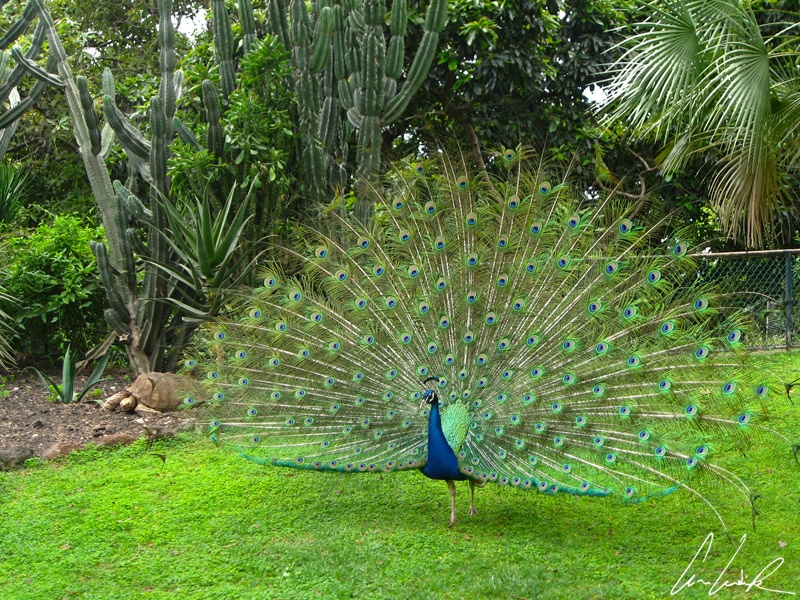
Some peafowls deploy their blue plumage with panache in the aisles of the Madeira Botanical Garden
The climate of Madeira is favorable to the growth of flowers from both tropical and cold regions. The island displays floral species from many parts of the world. Whether you are a botanist, a nature lover or a grasshopper, the Madeira Botanical Garden takes you in the midst of a kingdom of plants from all over the world… The color cocktail is stunning. The exotic Cannas bring to the garden its warm-toned summer bloom and dark green glossy foliage ! Due to its mild climate, Madeira is suitable for the cultivation of the most delicate orchids. Different orchids bloom throughout the year. At the time of our visit, the Cymbidiums were in full bloom, dazzling and elegant. The Cymbidium is indeed the star of orchids ! In the wild, it grows in Southeast Asia, on cool mountain slopes as well as savannahs. There are about forty variants in a wide range of colors… If orchids symbolize love, luxury, strength, and beauty, the color of the orchid can change the original meaning of the flower. Thus, pink orchids symbolize grace, joy, and happiness and also innocence while green orchids are supposed to bring good luck and blessing. Purple orchids symbolize royalty, admiration, and respect. Orchids also represent good health and longevity. In ancient Greece they were associated with virility. With just a few steps we move from Asia to America… Native to the tropical regions of Central and South America, the Amaryllis (Hippeastrum) has a hollow stem proudly erect with six-petalled flowers. The most common variety, the Amaryllis “Red Lion” is deep red, but there are no less than 80 species with amazing colors including orange, fuchsia, white, plain or variegated… The name “amaryllis” (from the Greek “Amarullis” which means “to shine”) originates in “The Ecolgues”, also called “The Bucolics”, by the Latin poet Virgil. Greek mythology explains the origin of the flower through a story of love. A young shepherdess, Amaryllis, falls in love with Alteo. To win his love, Amaryllis stands in front of Alteo’s house for thirty nights, piercing her heart with a golden arrow to express her unattainable love. On the thirtieth day, a beautiful red flower grew from the blood of her heart, thereby finally winning Alteo’s love in return… The red Amaryllis, therefore, symbolizes love and sacrifice to win love. In 1733, Swedish naturalist Carl von Linné used her name to baptize this little-known plant in Europe. A few steps further and we enter South Africa where the White Crinium produces an umbel of large, showy flowers similar to graceful white lilies… Its close neighbor (Strelitzia Reginae) displays a curious shape, similar to a bird’s head. The bird of paradise… that’s a dreamy name, isn’t it ? Definitely, wandering around the Madeira Botanical Garden and moving whichever way takes our fancy – among orchids, amaryllis and many other beautiful plants – we feel “the power of flowers” as sung by French singer Laurent Voulzy, “On laisserait bien nos cœurs / Au pouvoir des fleurs” (We give our hearts to the power of flowers…).
Find more on Madeira
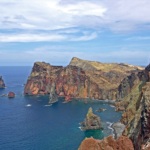

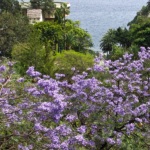
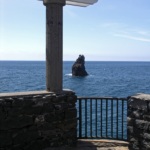
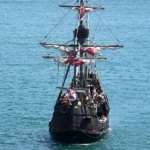



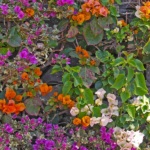
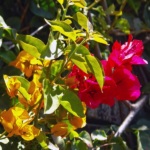


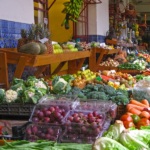

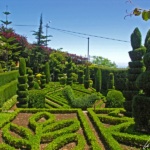





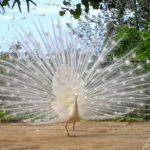
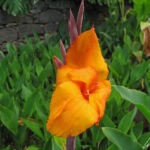


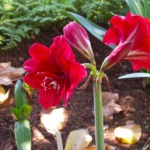
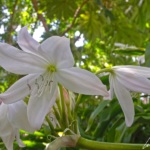
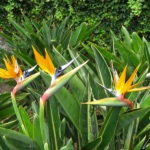


“The Island of the Flowers”…that right there is enough to convince me to go! 🙂 It’s absolutely beautiful! Do you have a picture of the funny hats on the guys in the market? I’m intrigued and now I feel the need to Google it! I’m also intrigued by the scabbardfish. I might need to add Madeira to my travel wish list!
The market’s amazing colour begins right at the entrance where local women in folk costume who sell all kinds of exotic flowers… I have added a picture of these funny hats to the photo gallery 🙂 Ah, ah the scary-looking espada (scabbard fish), black, slippery eel-like creatures with rows of razor-sharp teeth and huge watery eyes. They are the island’s staple fish, caught at night deep below the surface of the Atlantic !
I love your photos! That little gallery of flower shots at the bottom is just stunning!
Thank you 🙂 Madeira Island is famous throughout the world for its natural beauty and the Botanical Garden boasts harmonious forms, contrasting colours and more than 2000 exotic plants… A real paradise for a photographer !
I am in love with your words. While reading your post, I felt I am there right beside you and exploring Funchal! Recently I visited Mendocino, a small coastal town in northern California. I experienced somewhat similar things like this town.
Thank you 🙂 What ? I’ve missed Mendocino when I did my road trip Pacific Coast Highway 1 ! It gives me an excuse for a return visit 😉
That island looks so beautiful. I have never been there, but the pictures are insane, especially in the botanical gardens! Thank you for sharing, I hope to head to the Azores one day so will have to try and get there.
The Azores are also on my travel bucket list for a while 🙂 The Botanical Garden is a simply unforgettable garden and a mandatory presence in the itinerary when visiting Madeira.
How wonderful it would be to visit the island of flowers. I must say you are very lucky to experience the peafowl deploying it’s plumage
Madeira is truly unknown natural gems of Europe.It is the perfect holiday destination ! The white peacock really amazed me with its beauty and grace.
Such fantastic landscapes and the biodiversity of flora and fauna. Nature at it’s best to make a traveler recoup and rewind. I have always loved the name of the place – Madeira (which means alcohol in Urdu).
سلام وعليکم… Ok, this is the only word I know 🙂 Madeira is perfect for those wanting a walking holiday off the beaten track with adventurous trails in green forests of luxurious vegetation. If you are a nature lover you will love exploring Madeira !
Madeira and the Azores are definitely on my must-visit list – and especially if you say they have passion fruit juice there; that’s my favorite!
Ah, ah the Azores are also on my travel bucket list for a while 🙂 Of course the passion fruit juice was fresh and so delicious… Now I get my mouth watering 🙂
I always love orchids, but *all* of these flowers are gorgeous! What a beautiful place to explore!!
I also adore your photo of a white peacock! Is is albino, or a totally different strain of peacock!? I guess you are right that it would be perfect for a wedding!!
The Jardins Botânicos da Madeira teem with visitors who wander in amazement at the leafy spectacle on offer ! There’s so much to see here it’s difficult to know where to start 😉 Although albino peafowl do exist, this is quite rare, and almost all white peafowl are not.
That’s my kind of market! I like looking in markets to see if there are local fruits and vegetables I’ve not seen before.
The Mercado dos Lavradores Market offer a colorful selection of the island’s products and turns out to be an excellent place to buy fruits and flowers. For most visitors the fruit stalls around the open central courtyard are the real highlight. For every fruit you recognise, there’ll be one nearby you don’t 😉
I was talking to a friend the other day about going to Madeira, so I am saving your post for more research for the trip. And thank you for the colorful photos!
Lush green forests, friendly little towns in quiet green valleys… Madeira, land of ingenuity and nature, of the ancient Discoveries route and commercial trade, above all seduces the senses. Madeira should definitely be on your bucket list !!
A perfect stop over to the island of sunflowers. I love flowers and Your photos was really beautiful.what a Relaxing views.
Thank you 🙂 Madeira offers many opportunities to make the visitors’ stay truly unforgettable one.The flowers are stunning and you easily understand why Madeira is frequently called “the floating garden” 😉
The Island of Flowers sounds like something out of a fairy tale! omg it’s so gorgeous, but that cliff would freak me out!
Indeed, Cabo Girão is a lofty sea cliff. Those cliffs are some of the highest in Europe, with a near vertical drop of over 500 meters down to the raging seas of the Atlantic Ocean at the base of the cliffs !! It freaked me out too 😉
You got me intrigued by the very first picture. And then the way you described it, just wow, it’s like I am there with you exploring this beautiful island. Sadly I haven’t heard of this gorgeous place but now it’s on to see list 😀 I completely love your picture gallery in the end.
Thank you so much ! The Portuguese island of Madeira, way out in the Atlantic, is a place of eternal springlike weather 😉 If you are a nature lover, Madeira should definitely be on your bucket list.